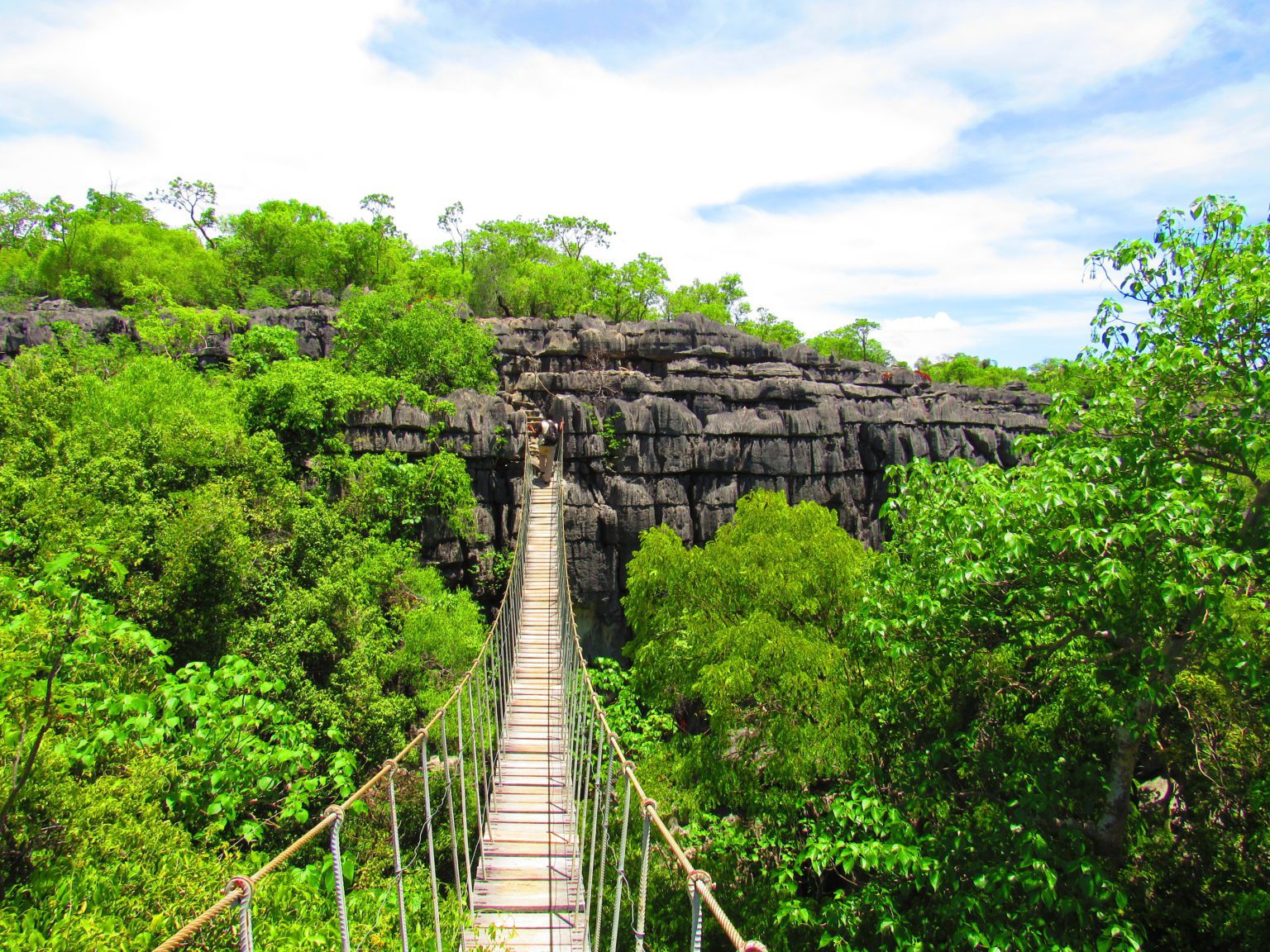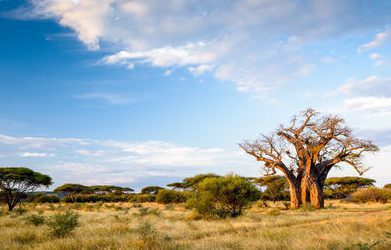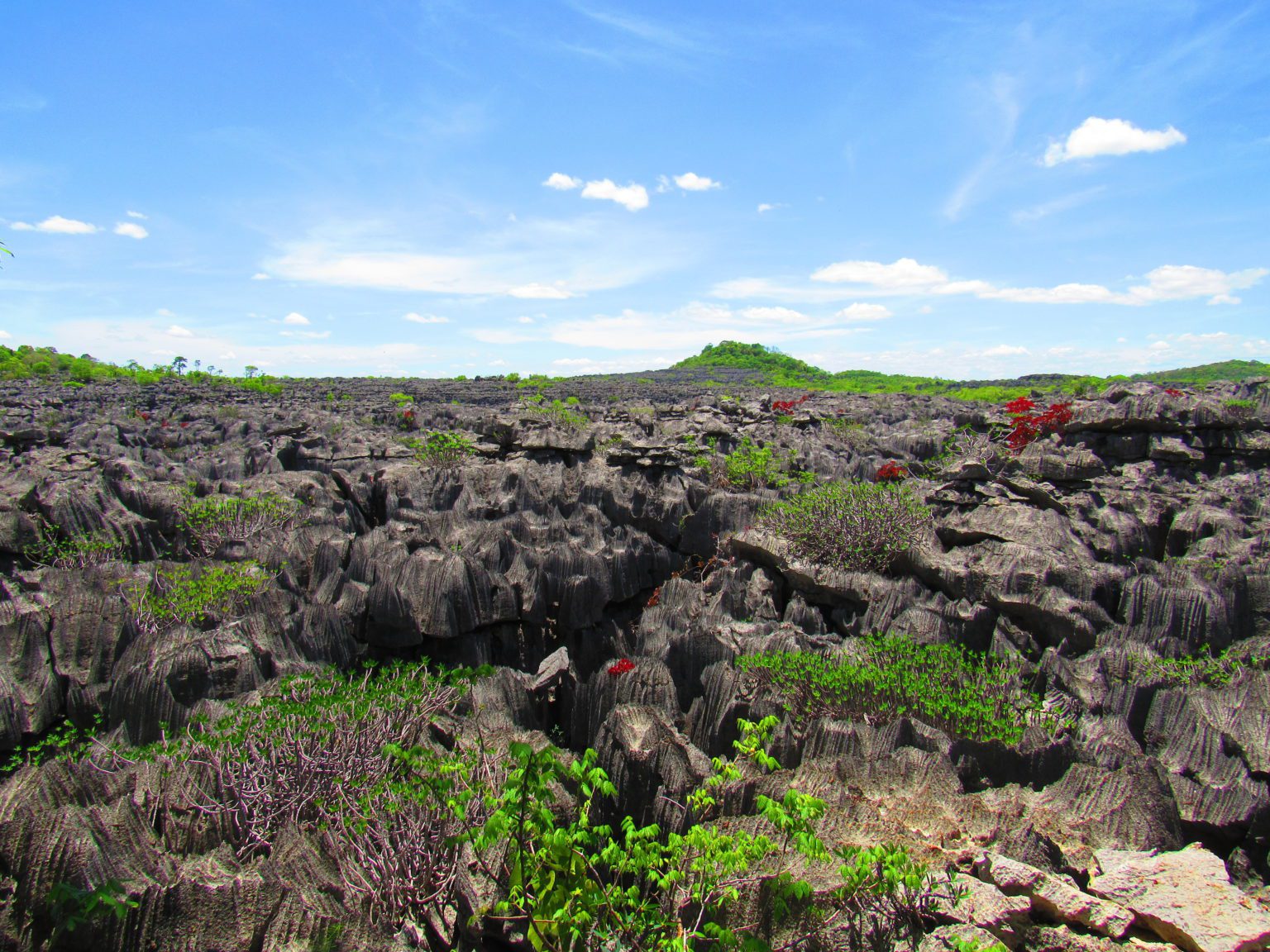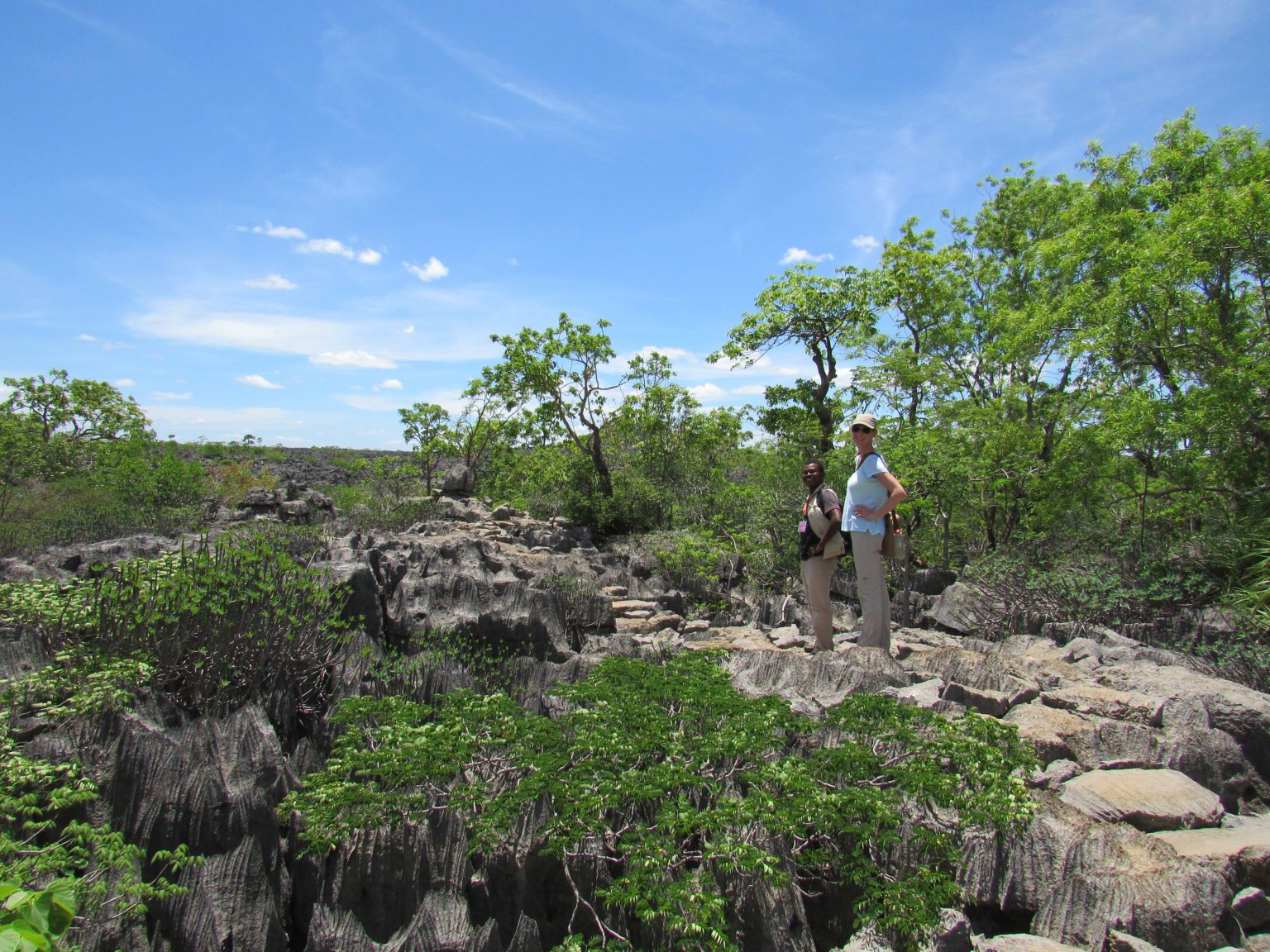Western Madagascar
Tsingy de Bemaraha
This unique site, a forest of 40 – 50 meter high limestone peaks, is classified as a UNESCO World Heritage Site. The Tsingy are razor sharp pinnacles produced by the erosion of limestone massifs over millions of years. Steps, boardwalks, ladders, cables and suspension bridges have been installed with phenomenal expertise to form a pathway allowing tourists to explore the tsingy in safety.
The Tsingy shelters a vast array of wildlife: 11 species of lemur (including Verreaux and Decken’s Sifaka and Red-Fronted Brown Lemurs), 103 species of terrestrial and aquatic birds, 15 species of bats, 22 species of amphibians and a variety of reptiles. Pachypodiums and other strange succulents provide splashes of green amidst the grey limestone.
Avenue of the Baobabs – Morondava
The Morondava area was the center of the Sakalava kingdom, and their tombs bear witness to their power and creativity. These elaborately sculpted wooden royal tombs are frequently decorated with well-executed, often erotic, funerary carvings representing life and fertility. Today, Morondava is the center of a prosperous rice-growing area and a seaside resort with a laid-back atmosphere.
The main attraction is its proximity to the famous Avenue of the Baobabs, a cluster of towering Grandidier’s Baobab, one of Madagascar’s most famous views. The Avenue became a protected natural monument in 2007 and new trees have been planted on the reserve. The best time to visit is at sunset.




